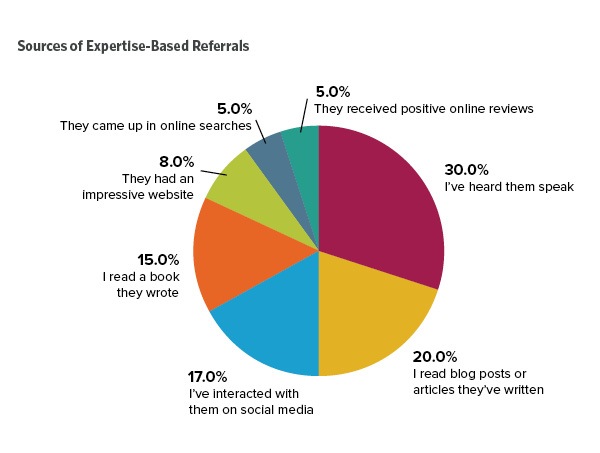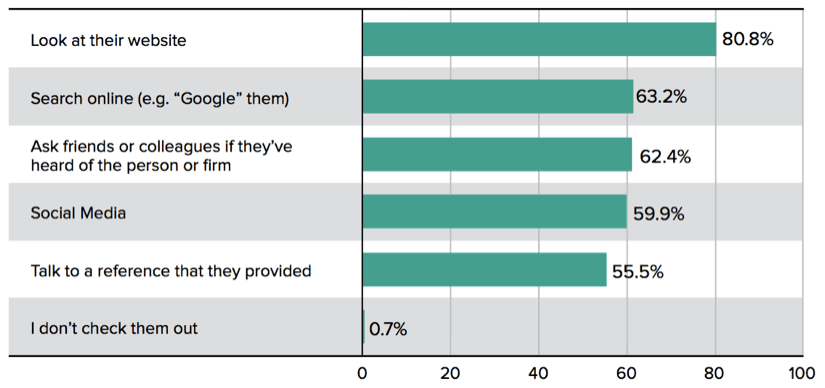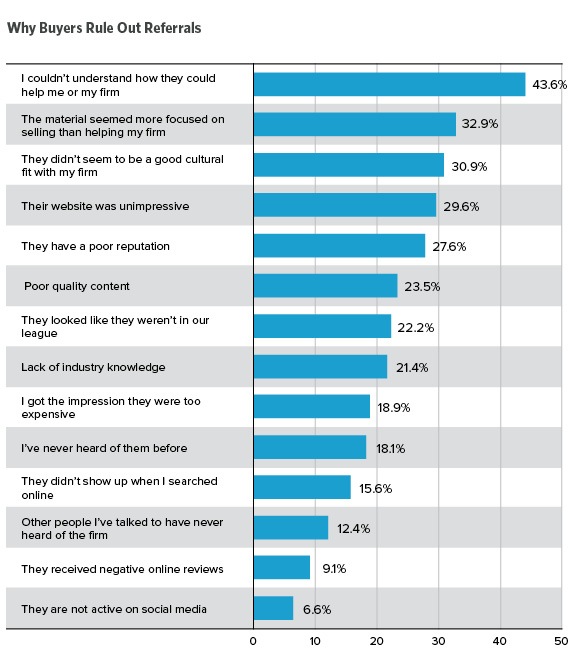You might not think your referral strategy has much to do with your professional services firm’s brand. If you’re like many folks, you believe that most referrals occur naturally as the result of the quality of your work and the responsiveness of your service to your clients. And if you meet people in the business community they might refer their clients, although they rarely do.
You may also believe that your firm’s brand is the product of your marketing efforts. Advertising and sponsorships are key. And in the end, your brand doesn’t have much to do with referrals.
The problem is, these views couldn’t be further from the truth. Worse still, they can cause you to miss out on key opportunities. In fact, referral marketing and your professional services brand go together like peanut butter and jelly.
How does referral marketing impact your brand, and vice versa? For the answers, we’ll first have to take a look at what each of these terms really mean.
Your Professional Services Brand Defined
Your firm’s brand isn’t created by the marketing department. It isn’t a logo, name, or tagline, nor is it synonymous with some particular imagery or color palette. Your brand is much more — but that doesn’t mean it’s something airy and vague, either.

Your firm’s brand is its reputation and visibility within your target market.
Your visibility is the degree to which your audiences and other industry players know who you are., Your reputation is what your firm is known for and the general sentiment around your business. Put simply, it’s what people say about you when you’re not in the room.
Because your reputation and visibility can be measured through marketplace research, your brand strength can be calculated with great precision.
A firm’s brand impacts everyone in the business – and ultimately, everyone helps to strengthen or weaken it.
Referral Marketing Revisited
In the Hinge Research Institute’s survey of professional services firms’ top priorities and initiatives in 2015, we found that referral marketing was the top marketing initiative that respondents planned to undertake this year.
And there are several good reasons for that. For starters, this priority aligns with respondents’ most commonly cited challenge, generating new business. Plus, in previous research, we’ve found the most common way buyers search for a new professional services provider is asking friends and colleagues. It’s cited by 71% of that study’s participants. In some industries, this number is even higher. In accounting, for example, the figure is 87%.
Generally speaking, we all know that referrals are important. But different firms operate with varying understandings of how referrals work. And that’s where many businesses run into problems.
When we think of referrals, most of us think of clients or known influencers who have direct familiarity with our work. We call these experience-based referrals, and they’re very important, but they’re not the whole story.
Another Source of Referrals
In fact, 81.5% of firms receive referrals from folks they have not worked with directly. These referrals aren’t made in the dark. They are based on experiences of your firm other than a vendor/client relationship.
Specifically, they draw on your reputation and what referrers understand about your areas of expertise. In short, these referrals are built on your brand.
Your Brand Drives Referrals
How do the sources of these brand-based referrals break down? Our recent research on 523 professional services firms found the answers:
- 4% of brand-based referrals are driven by general reputation
- 1% of brand-based referrals are driven by expertise
A small percentage of additional referrals (6%) come from people who have met you but don’t have much detailed information about what you actually do. If you were wondering what you accomplish through in-person networking events.
Now you have the answer.
What drives expertise-based referrals? After all, an impression of your expertise doesn’t just arise from thin air. Our research revealed that expertise-based referrals have several major sources:

There’s a common theme here—the sharing of your expert knowledge. This knowledge-sharing might come in the form of speaking engagements (30% of respondents), blog posts and articles (20%), books (15%), or social media engagement (17%).
In sum, the sources cited by buyers constitute the major pillars of a successful content marketing strategy. What’s more, it’s likely that these sources also drive many reputation-based referrals, serving as channels through which recognition of your capabilities and expertise can spread.
Good Referrals Gone Bad
Unfortunately, the problems with many firms’ referral marketing strategies don’t end with a too-narrow definition of referrals.
It’s common to hear service providers say that they can win new clients reliably…if they can just get a foot in the door to talk with them. In many cases, that may be true. But what if you never get the chance?
Our research shows that over half of buyers—a full 51.9%—report they have ruled out firms without talking to them. Those referrals (and any effort spent generating them) have gone to waste.
Of course, anyone who purchases professional services has been on the other side of this conundrum. We receive the names of several potential providers and, most likely, we check out their respective websites or Google them.
How Buyers Check Out Professional Services Providers

Based on this initial round of checking out firms, we begin to narrow our search. Our research on buying behavior shows that most buyers check out providers online, with a firm’s website being by far the most common source of information (cited by 80% of respondents).
But what happens to make buyers rule out a potential provider? The short answer is that there are many ways things can go wrong.

The top reason, an inability to understand how the provider could help the buyer, is rooted in a failure of marketing – the firm has failed to communicate its relevant services and expertise. Other widely cited reasons are explicitly grounded in the provider’s unsuccessful marketing efforts, such as an unimpressive website or low-quality content.
SEE ALSO: New Research Report: Referral Marketing Study
It’s clear, then, that successful referrals are intimately tied to your professional services brand and the marketing efforts that support it.
When Referral Marketing Succeeds
The fact is, most of the reasons behind failed referrals can be fixed or avoided. In order to avoid getting ruled out up-front, it’s important to understand your target audience. Demonstrate your expertise through educational and relevant content, showing your audience why your knowledge matters to them. Build your network and build your visibility, taking full advantage of a robust content marketing strategy.
As we’ve seen, your referral marketing efforts and your brand are closely interrelated. Building referrals builds your brand. Likewise, building your brand will drive your referrals. With these two elements of your business in balance, you will be positioned to generate new business and grow even faster.
And to learn more about effective referral marketing in today’s marketplace, download a free copy of the full research report, Referral Marketing Study.
Additional Resources
- Develop a stronger and more valuable brand with Hinge’s Brand Building Guide for Professional Services Firms.
- Discover the surprising factors that drive referrals in our free Referral Marketing Study.
- Referrals make the professional services world go round. In the Referral Marketing course through Hinge University, you’ll learn what works—and what doesn’t—when building a reliable stream of referrals.
How Hinge Can Help
Hinge has developed a comprehensive plan, The Visible Firm® to address these issues and more. It is the leading marketing program for delivering greater visibility, growth, and profits. This customized program will identify the most practical offline and online marketing tools your firm will need to gain new clients and reach new heights.
On Google+ or LinkedIn? Follow us +HingeMarketing and join us on LinkedIn.


